Volume 28.3
September–December 2025
Full table of contents
ISSN: 1094-8074, web version;
1935-3952, print version
Recent Research Articles
See all articles in 28.3 September-December 2025
See all articles in 28.2 May-August 2025
See all articles in 28.1 January-April 2025
See all articles in 27.3 September-December 2024
Interested in submitting a paper to Palaeontologia Electronica?
Click here to register and submit.
Article Search
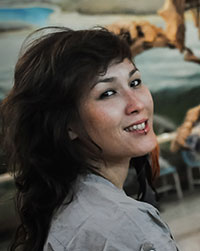 Jingmai K. O’Connor, Negaunee Integrative Research Center, Field Museum of Natural History, Chicago, Illinois, USA. Jingmai@fieldmuseum.org
Jingmai K. O’Connor, Negaunee Integrative Research Center, Field Museum of Natural History, Chicago, Illinois, USA. Jingmai@fieldmuseum.org
Jingmai O’Connor is the Associate Curator of Fossil Reptiles at the Field Museum of Natural History. She studies pennraptoran evolution with a primary focus on the origin and evolution of Mesozoic birds.
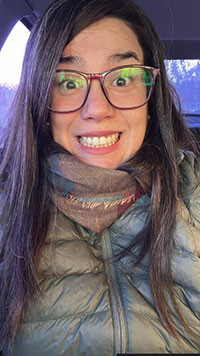 Carolina Gutiérrez. Instituto de Estudios Andinos Don Pablo Groeber (UBA – CONICET), Departamento de Ciencias Geológicas, Facultad de Ciencias Exactas y Naturales, Universidad de Buenos Aires, Intendente Güiraldes 2160, Pabellón 2, C1428EGA, Ciudad Universitaria,Buenos Aires, Argentina.
Carolina Gutiérrez. Instituto de Estudios Andinos Don Pablo Groeber (UBA – CONICET), Departamento de Ciencias Geológicas, Facultad de Ciencias Exactas y Naturales, Universidad de Buenos Aires, Intendente Güiraldes 2160, Pabellón 2, C1428EGA, Ciudad Universitaria,Buenos Aires, Argentina.
Carolina Gutiérrez is a paleontologist from Argentina. She is a researcher at the University of Buenos Aires, where she also teaches. Her research focuses on the Nereites Ichnofacies and the role of microbial mats in biostabilized substrates in Gondwanan settings. She integrates ichnotaxonomy, sedimentary facies analysis, and microbial mat interactions to reconstruct ancient benthic ecosystems.
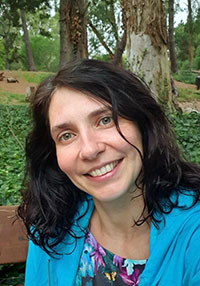 Dra. Daniela S. Monti. Laboratorio de Filogeografía y Filogenias Moleculares, Departamento de Ecología Genética y Evolución, Facultad de Ciencias Exactas y Naturales, UBA, Intendente Güiraldes 2160, Pabellón II -Ciudad Universitaria, (CPBA1428), CABA, Argentina.
Dra. Daniela S. Monti. Laboratorio de Filogeografía y Filogenias Moleculares, Departamento de Ecología Genética y Evolución, Facultad de Ciencias Exactas y Naturales, UBA, Intendente Güiraldes 2160, Pabellón II -Ciudad Universitaria, (CPBA1428), CABA, Argentina.
danielamonti@gmail.com
Researcher at CONICET (National Scientific and Technical Research Council), based at the University of Buenos Aires, Argentina. Her work explores how changes in early Palaeozoic oceans influenced the evolution and dispersal of trilobites. She focuses on the Cambrian–Ordovician family Olenidae, applying phylogenetic, biogeographic, and other quantitative approaches.
Dr. Guillermo Fidel Turazzini. Investigador CONICET, Laboratorio de Morfología Evolutiva y Paleobiología de Vertebrados, (MEP-Lab / DBBE - FCEyN - UBA). gfturazzini@gmail.com
Guillermo is a vertebrate paleontologist that focuses on alfa taxonomy of anurans, although in his early career he worked on mammalian carnivores focusing on geometric morphometry analysis. His current line of research is on late Cenozoic anura fossils from Argentina, but he also participates in workgroups that search and study late Mesozoic and early Cenozoic vertebrate fossils from Patagonia.
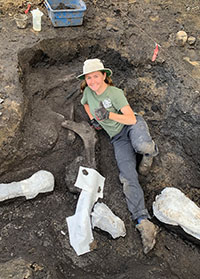 Bridjet Radstaak (Blog and Public Relations Editor)
Bridjet Radstaak (Blog and Public Relations Editor)
bridjetradstaak@gmail.com
Bridjet is a palaeontologist and evolutionary biologist focused on reptile and amphibian
evolution. She received her undergraduate degree in palaeontology from the University of
Alberta, with a focus on fossil turtles. She is currently working on a Master’s in Earth Sciences
at Carleton University, with a specific focus on amphibian embryology and limb development.
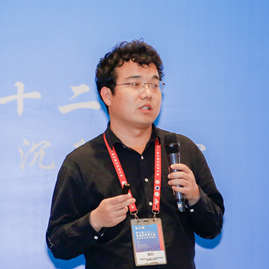 Li Tian. State Key Laboratory of Geomicrobiology and Environmental Changes, China University of Geosciences (Wuhan), No. 68 Jincheng Street, Weilaisan Road,Wuhan, 430078.
Li Tian. State Key Laboratory of Geomicrobiology and Environmental Changes, China University of Geosciences (Wuhan), No. 68 Jincheng Street, Weilaisan Road,Wuhan, 430078.
tianlibgeg@cug.edu.cn
Li Tian has been trained at China University of Geosciences (Wuhan) and University of Bristol as paleontological Ph.D student and postdoctoral associate in 2015 and 2019, respectively. His research is not just focusing on biostratigraphy and paleoecology of Ediacara and Triassic but also exploring ways to integrate the modern biotic data with geological records. He is running a marine ecology simulation lab as a PI, with a handful of geology and biology students involved.
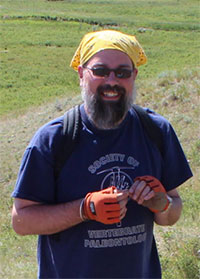 Jonathan M.G. Perry. Department of Physical Therapy Education, College of Health Sciences - Northwest, Western University of Health Sciences, 2665 S. Santiam Hwy., Lebanon, Oregon, 97355, U.S.A. jperry@westernu.edu
Jonathan M.G. Perry. Department of Physical Therapy Education, College of Health Sciences - Northwest, Western University of Health Sciences, 2665 S. Santiam Hwy., Lebanon, Oregon, 97355, U.S.A. jperry@westernu.edu
Jonathan M. G. Perry is an Associate Professor in the Department of Physical Therapy Education at Western University of Health Sciences in Lebanon, OR, USA. He earned a Bachelor of Science (Honors) in Palaeontology at the University of Alberta in 1998, a Master of Science in Systematics and Evolution at the University of Alberta in 2001, a Ph.D. in Biological Anthropology and Anatomy at Duke University in 2008, and then completed a Postdoctoral Fellowship at Stony Brook University. His research focuses on the chewing system in primates, the interplay between diet and dental morphology, and the early evolution of primates.
Sergio Álvarez-Parra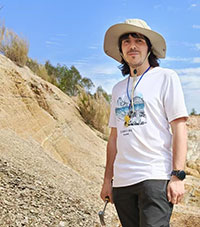 Instituto Geológico y Minero de España-CSIC, Spain
Instituto Geológico y Minero de España-CSIC, Spain
alvarez.parra.sergio@gmail.com
Sergio is a biologist specialized in palaeontology, who received his PhD in Earth Sciences from the University of Barcelona in 2023. He is currently working as a Special Research Assistant at the Nanjing Institute of Geology and Palaeontology, Chinese Academy of Sciences. His research focuses on the taxonomy and palaeobiology of fossil insects preserved as both compressions in rock and bioinclusions in amber, with a primary emphasis on the orders Hymenoptera and Psocodea. Additionally, he is interested in taphonomy, aiming to elucidate the formation of the amber-bearing outcrops and understand the preservation of amber itself. Sergio has gained experience through research stays at institutions such as the University of Oxford, the Muséum national d’Histoire naturelle, and the Senckenberg Forschungsinstitut und Naturmuseum, as well as by participating in several fieldworks in Spain and China.
-
-
PE: An influential journal
 Palaeontologia Electronica among the most influential palaeontological journals
Palaeontologia Electronica among the most influential palaeontological journalsArticle number: 27.2.2E
July 2024





 A Review of Handbook of Paleoichthyology Volume 8a: Actinopterygii I, Palaeoniscimorpha, Stem Neopterygii, Chondrostei
A Review of Handbook of Paleoichthyology Volume 8a: Actinopterygii I, Palaeoniscimorpha, Stem Neopterygii, Chondrostei